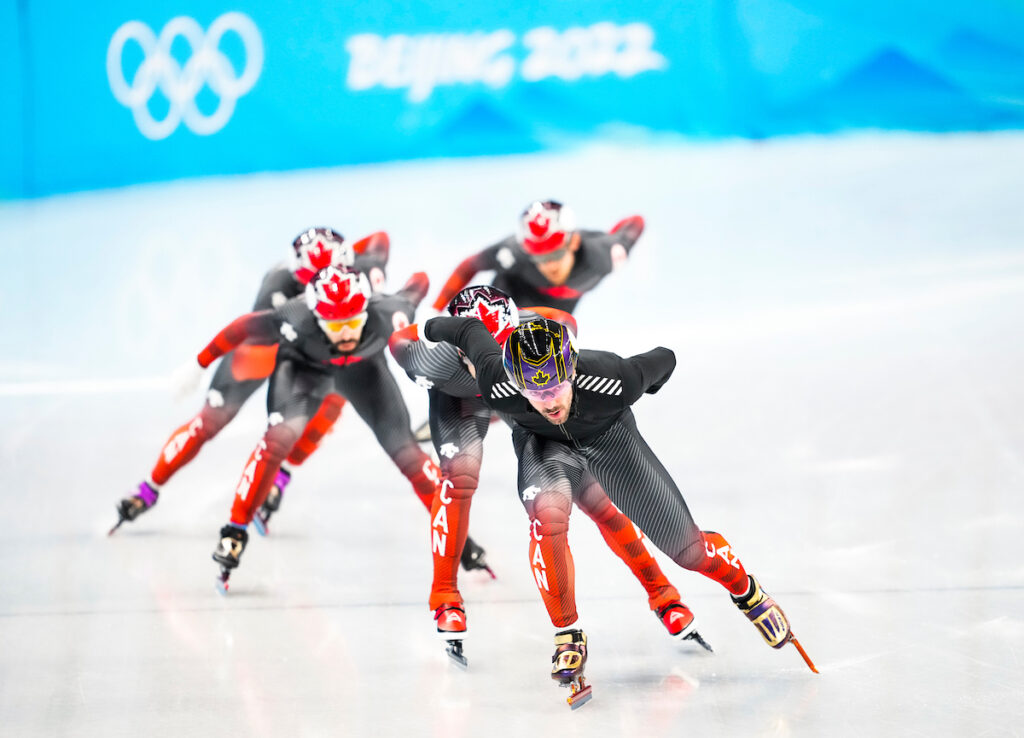Taking a person-first approach to high performance sport in Canada

Highlights Over the course of 2022, athletes and supporters have consistently raised concerns about maltreatment and lack of transparency in the Canadian sport sector In this SIRCuit article, Teddy Katz explores athlete concerns, as well as changes being made within Canadian sport to move towards a “person-first” system Katz spoke to Olympians, mental health experts…
Knee injuries in women’s soccer
In soccer, women have twice the risk of sustaining ACL knee injuries compared to men. Research shows that injury prevention programs such as FIFA 11+ can reduce ACL injury rates by up to 45% in women. Effective injury programs include multiple exercises focused on strength, agility, balance and mobility. To protect athletes from injury, teams…
Gender equity and sport media
Did you know that over 90% of Canada’s sport media coverage is focused on men’s sport? While many Canadians want to watch women’s sports, finding channels that cover them can be difficult. Increasing media coverage of women athletes is essential for promoting gender equity in Canadian sport.
Pregnancy and high performance sport
New Canadian research shows that the average age of first-time mothers among a sample of female high performance athletes (33 years) was 3.5 years older than the Canadian average. Women athletes often face a dilemma about whether to continue a sporting career or start a family. It is important for athletes, coaches and healthcare professionals…
Cardiovascular effects of performance enhancing drugs
Performance enhancing drugs (PEDs) are associated with dangerous effects on the heart. Research shows that they increase the risk of heart attack and can result in abnormal blood clotting and an irregular heartbeat. PEDs also help athletes over-exert themselves, which can cause increased strain on muscles of the heart. PEDs are banned in sports and…
HIIT or SIT?
Both high-intensity interval training (HIIT) and sprint interval training (SIT) have been shown to improve performance, but through different body adaptations. HIIT improves the heart’s ability to pump blood to exercising muscles, while SIT causes greater changes in how the muscles absorb and use oxygen.
Athlete thoughts on high performance sport culture
Listening to athletes is an important part of enacting cultural change in sport. Canadian researchers interviewed athletes to get their perspective on when the feel safe versus unsafe in high performance sport settings. Inappropriate coach behaviour, an inattentive system, lack of resources and exclusion by teammates make athletes feel unsafe, while knowledgable and supportive coaches…
Technology in officiating
Research shows that video assistance referee (VAR) technology in professional soccer has helped with officials’ decision-making, but has disrupted the flow of the game. To improve speed and accuracy, FIFA debuted a new technology at the 2022 World Cup that automates the detection of offsides. Using multiple cameras and artificial intelligence software, officials were able…
Navigating motherhood in high performance sport
“As an athlete, you’re always thinking about yourself. Then my daughter, Kate, comes along and that whole perspective totally changes. I had to make every moment count, whether I was being a mom with Kate, or training at the gym,” says 2-time Olympian, Mandy Bujold. The Canadian boxer discusses her fight to earn a spot…
Exercising outdoors in Canada: What the research tells us about exercising safely and effectively in extreme cold
Highlights Our bodies experience cold as a physiological stressor, meaning that one’s body must work hard to keep itself in thermal balance It is important for athletes and coaches to be aware of ways to mitigate the risks of cold exposure, which can include tissue injury and diminished cardiovascular capacity This article summarizes the research…